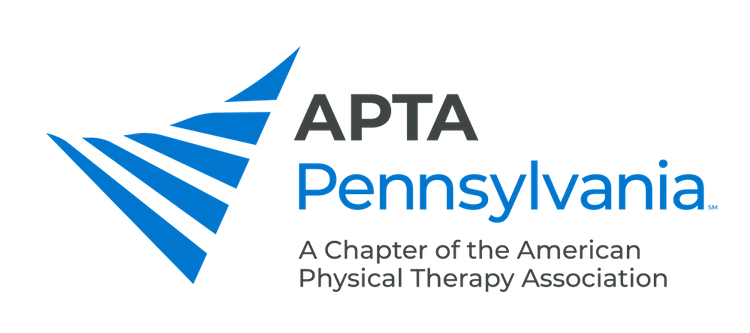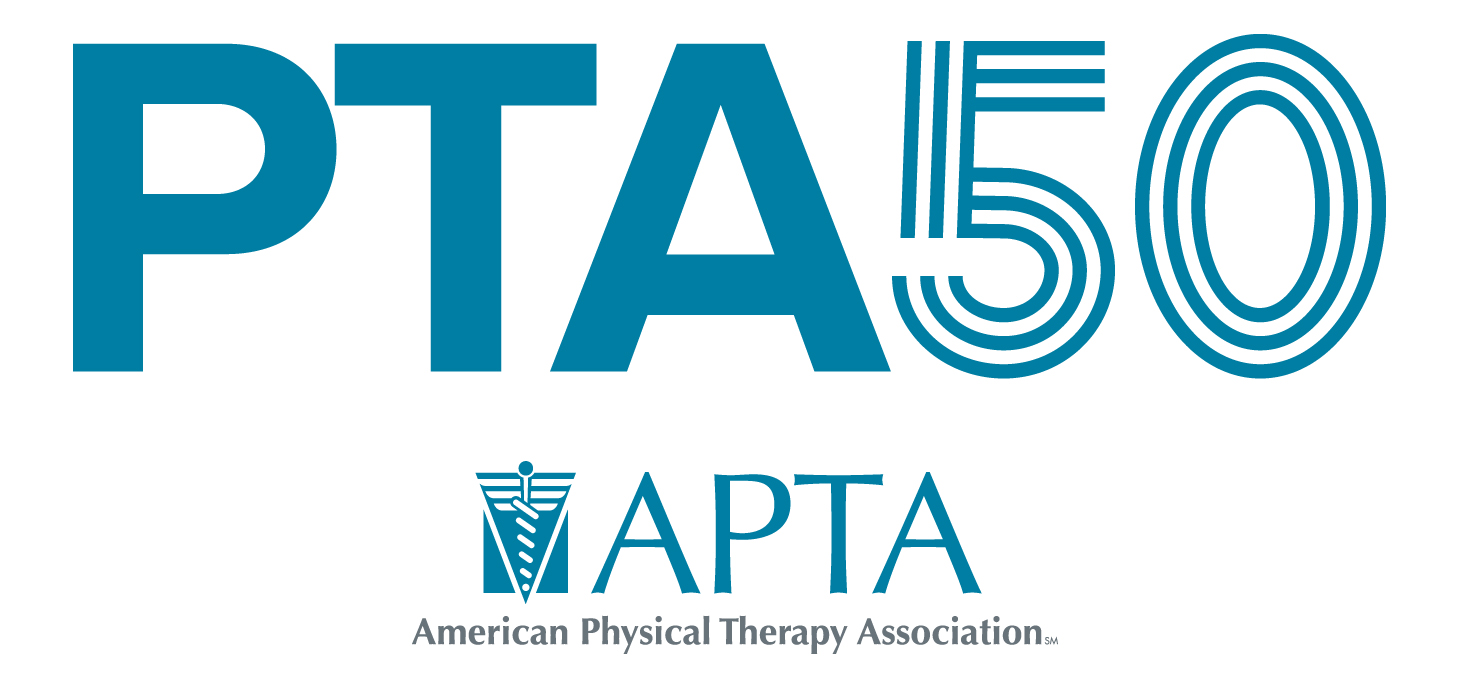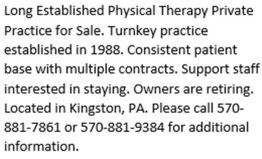| Year |
Month |
Event |
Source |
| 1944 |
|
In 1944, the American Physical Therapy Association developed a syllabus for the training of volunteer physical therapy assistants. This training course was never implemented but materials developed in cooperation with the Joint Orthopedic Nursing Advisory Service for the orientation and utilization of volunteer assistants for the care of poliomyelitis patients were made available and distributed by the National Foundation for Infantile Paralysis. |
Ad Hoc Committee to Study the Utilization and Training of Nonprofessional Assistants, Summary Report of Activities of Committee, House of Delegates Handbook, 1967. |
| 1949 |
|
In 1949, the House of Delegates of the APTA adopted a policy statement which officially recognized the need and value of nonprofessional assistants in assisting patients in preparation for treatment, and in housekeeping, maintenance, and transport activities. |
Ad Hoc Committee to Study the Utilization and Training of Nonprofessional Assistants, Summary Report of Activities of Committee, House of Delegates Handbook, 1967. |
| 1964 |
|
At the 1964 APTA House of Delegates, the House of Delegates approved a Northern California Chapter resolution to investigate the use of nonprofessional personnel by a vote of 215 to 139. The Board of Directors appointed a 5-member committee to submit a preliminary policy proposal to the House for action in 1965 and a final report to the House for action in 1966. |
Ad Hoc Committee to Study the Utilization and Training of Nonprofessional Assistants, Summary Report of Activities of Committee, House of Delegates Handbook, 1967. |
| 1965 |
|
Medicare and Medicaid legislation signed by President Lyndon Johnson. |
|
| 1966 |
July |
In 1966, the House of Delegates voted to accept the Policy Statement for the Physical Therapy Aide with minor exceptions. |
Ad Hoc Committee to Study the Utilization and Training, Report to the 1967 House of Delegates |
| 1966 |
November |
To train needed health workers, President Lyndon Johnson signed PL. 89-751, the Allied Health Professions Training Act, into law on November 3, 1966. The legislation authorized federal grants for construction, rehabilitation, or replacement of training centers. |
J Allied Health 2003; 32(3): 143-147. |
| 1967 |
|
First two PTA education programs accept students: St. Mary's Junior College (now St. Catherine University) and Miami-Dade Community College. |
(1) Woods, Ellen N. "PTAs: Their History and Development," PT Magazine, April 1993, 1(4):34-39. (2) Healing the Generations: A History of Physical Therapy and the American Physical Therapy Association, by Wendy Murphy (1995), page 197. |
| 1967 |
July |
On the evening of July 5, 1967, in a roll call ballot, the House of Delegates passed a proposed policy statement for the training and utilization of the physical therapy assistant as amended. (313 in support, 70 opposed, 4 abstained). |
Summary of Proceedings [Minutes], House of Delegates, 1967, American Physical Therapy Association, July 5, 1967. |
| 1969 |
|
The Board of Directors endorsed the Standards for Physical Therapy Assistant Education Programs and the accreditation procedure for physical therapist assistant programs. |
Verbatim Transcript, 1969, House of Delegates, American Physical Therapy Association. |
| 1969 |
June |
First class of 11 PTAs graduated from St. Mary's Junior College, which later merged with St. Catherine's University, Minneapolis. |
Program report, Accreditation. |
| 1969 |
August |
Second class of 4 PTAs graduated from Miami-Dade Community College. |
Program report, Accreditation. |
| 1969 |
July |
The House of Delegates amended Article IV, Section 1, Subsection C(1), of the association bylaws by changing the occupational title, "Physical Therapy Assistant" to "Physical Therapist Assistant." |
Verbatim Transcript, 1969, House of Delegates, American Physical Therapy Association. |
| 1970 |
June |
In 1970 the House of Delegates took the first steps toward bringing PTAs into APTA by offering temporary affiliate membership. |
From page 197, Chapter 6, "The Golden Years: 1959-1979," Healing the Generations: A History of Physical Therapy and the American Physical Therapy Association, by Wendy Murphy (1995). |
| 1973 |
|
PTAs were granted affiliate APTA membership in 1973. |
"PTA's Gain Membership Status," Progress Report, 1973, 3(7): 1. |
| 1975 |
|
The House of Delegates adopted the Essentials of an Interim Approved Educational Program for the Physical Therapist Assistant. |
"House Actions," Progress Report, 1975, 4(6): 3. |
| 1976 |
|
The newly designed physical therapist assistant and physical therapist student shoulder patches, approved by the 1976 House of Delegates, are now available for purchase from the national office at a cost of $1.00 for two patches. |
"By the way...," Progress Report, 1976, 5(9): 11. |
| 1977 |
April |
APTA recognized as an accrediting agency for physical therapy education (PT & PTA programs) for 3 years. |
"COPA Defers AMA Petition," Progress Report, 1977, 6(10): 1. |
| 1977 |
|
Program designed for physical therapist assistants who are blind or visually impaired started at St. Mary's Junior College in Minneapolis. It is the only school in the country having special facilities for teaching physical therapy and occupational therapy to blind students, and was initiated by the US Department of Education, Rehabilitation Services Administration, in 1977. |
"Blind Physical Therapists Use Sense of Touch to Provide Care," Progress Report, 1986, 15(4): 11. |
| 1978 |
|
PTs and PTAs were assigned the codes 076.121-014s and 076.224-010s, respectfully. These are the index numbers assigned physical therapists and physical therapist assistants in the latest Dictionary of Occupational Titles, recently published by the US Department of Labor's Employment and Training Administration. Each of the 20,000 job descriptions in the mammoth volume has a unique 9-digit code number and is grouped systematically with similar jobs. The good news for PTs and PTAs is that their new code numbers represent a significant upgrading. The Department of Labor has now officially dubbed them bona fide professionals. |
"Good News Dept...," Progress Report, 1978, 7(3): 1. Also "Job Description-—PTA," Progress Report, 1978, 7(6): 14. |
| 1978 |
|
The House of Delegates adopts "PTA" as the preferred letter designations to identify physical therapist assistants. This action does not supersede state law. |
"House Actions," Progress Report, 1978, 7(7): 1, 3. |
| 1979 |
|
Affiliate Membership Profile released. A majority are female (90%); caucasian (96%); and young (83% are under 29). Of the 365 respondents to the survey, 345 indicated that they are currently employed. The survey results suggest that physical therapist assistants tend to live and work in the areas where they attended school. About 80% have worked in one state since beginning practice, and 60% of those who are licensed are licensed in only one state. In 1977, the median gross income for full-time employed physical therapist assistants fell in the $8,500-$9,999 interval. For those employed on a part-time basis, the median gross income was $5,490 and under. |
"Affiliate Membership Profile," Progress Report, 1979, 8(1): 8. / "APTA's Competency Project," Progress Report, 11(5): 10-11. |
| 1979 |
|
18.3% of students enrolled in physical therapist assistant education programs in 1978 were minority students...14.5% of students graduating from physical therapist assistant education programs in 1977 were minority graduates. |
"Forum: Did you know," Progress Report, 1979, 8(3): 8. |
| 1980 |
|
At Annual Conference, a Mary McMillan Scholarship was awarded to a PTA student for the 1st time in the scholarship's history: Melinda Hong. A recent change in the scholarship criteria has allowed students in physical therapist assistant programs to be recommended for the scholarships. Hong, a student in the PTA program at De Anza College in Cupertino, California, will receive the $500 award. Hong already holds an AA in Physical Education from City College of San Francisco and a BA in Physical Education from California State University, San Francisco. The director of the physical therapist assistant program at De Anza is Francis Lupi. |
"Campus Reports: Students," Progress Report, 1980, 9(7): 4. |
| 1981 |
|
An informal survey of the Placement Office during Annual Conference week reveals salaries for new PTAs: $12,000-$16,500. |
"Progress Report Newsline," Progress Report, 1981, 10(8): 15. |
| 1982 |
|
1982 Current and Former Affiliate Membership Profile results: PTAs are getting older (75.6 percent are under 29, versus 83 percent in 1977). They're also treating more of the elderly (34.6 percent today, versus 27 percent in 1977), and less children (8 versus 6.8 percent). They're still overwhelmingly (90%) women. |
"Board Adopts New Policies for Affiliate Members," Progress Report, 1983, 12(6): 6. |
| 1983 |
|
The House of Delegates approves the formation of a physical therapist assistant Affiliate Special Interest Group (ASIG). |
American Physical Therapy Association, House of Delegates, 1983, minutes. |
| 1983 |
|
78 percent of the physical therapist assistant programs are in two-year colleges and 10 percent are in universities. 83 percent of the physical therapist assistant programs are in public institutions. An average of 59 students applied to physical therapist assistant programs for admission to an average class size of 27. Physical therapist assistant programs graduated 1,000. Source: 1980-81 American Physical Therapy Association survey of physical therapy and physical therapist assistant educational programs. |
"Low Faculty Salaries Blamed for Retention Problems," Progress Report, 12(9): 11. |
| 1984 |
|
The BOD approved the creation of a physical therapist assistant panel for the Commission on Accreditation in Education. |
"Highlights of Board Actions," Progress Report, 13(1): 6. |
| 1987 |
|
The Affiliate Special Interest Group (ASIG) held its first annual education conference March 28-29 in Topeka, Kansas. |
"ASIG Hosts First Conference On Education," Progress Report, 16(6): 18. |
| 1991 |
|
APTA minority membership is 4% of total membership, and physical therapist assistants account for only .2% of that percentage. |
Monahan B. "Encouraging Cultural Diversity," Progress Report, 20(1): 6. |
| 1992 |
|
It has been nearly 20 years since APTA's House of Delegates established the physical therapist assistant with an affiliate membership category. The 1992 House recognized contributions made by affiliate members to the Association by amending the bylaws to allow PTAs to hold office at the component level, with the exception of the office of president. |
"1992 House of Delegates Report," Progress Report, 21(9): 2. |
| 1996 |
June |
The following SPTAs received Minority Scholarship Award for Academic Excellence (1st year presented to PTAs): Karen Aitken, Douyon-Essex County College; James Lee Howlett, Wallace State College; and Mary Man, Tulsa Junior College. |
Johnette Meadows |
| 1997 |
Year end |
As of 2018 year end, 1997 was still the year APTA had the most PTA members -- 8,079. |
APTA Annual Reports and year end 2018 membership statistics. |
| 1998 |
|
The Affiliate Assembly of the American Physical Therapy Association celebrated the 25th anniversary of Affiliate membership in 1998 and the group's name was changed to the National Assembly of Physical Therapist Assistants. All PTAs and SPTAs automatically became members of the National Assembly. The Representative Body of the National Assembly is composed of PTAs who discuss issues related to motions coming before the House of Delegates; its members are drawn from the National Assembly, with one representative from each chapter, the District of Columbia, and Puerto Rico. |
(1) American Physical Therapy Association Annual Report 1998. (2) Hunt, Jennifer L. "Affiliate Assembly Celebrates 25th Anniversary of Affiliate Membership in APTA," [press release], May 7, 1998. (3) Wojciechowski, Michele."Celebrating a Milestone: 35 Years of PTAs," PT, 2004, 12(2): 42-49. |
| 1998 |
|
Physical Therapist Assistant Clinical Performance Instrument approved by APTA Board of Directors in March 1998. |
American Physical Therapy Association Annual Report 1998. |
| 1999 |
August |
A Normative Model of Physical Therapist Assistant Education: Version 99 was approved by APTA's Board of Directors and published in August 1999. |
American Physical Therapy Association Annual Report 1999. |
| 2000 |
|
Barbara J. Behrens, PTA, is the 2000 recipient of the FA Davis Award for Outstanding Physical Therapist Assistant Educator. Behrens has been a contributor to physical therapist assistant education since 1992 and currently [as of 2002] serves as Program Coordinator of the Physical Therapist Assistant Program at Mercer Community College in Trenton, New Jersey. She is the first physical therapist assistant to win the award. |
Honors & Awards recognition ceremony program booklet, 2000, American Physical Therapy Association. |
| 2003 |
|
1,397 physical therapist assistants credentialed under the Clinical Instructor Education and Credentialing Program. |
American Physical Therapy Association 2003 Annual Report. |
| 2004 |
|
"Advanced Proficiency for the Physical Therapist Assistant" program -- Physical therapist assistants have a new way to be recognized for outstanding accomplishments. The new APTA program recognizes PTAs who have achieved advanced proficiency in the areas of Cardiopulmonary, Geriatrics, Integumentary, Musculoskeletal, Neuromuscular, and Pediatrics through experience, continuing education, and demonstration of commitment to the profession through leadership and active participation in the PT/PTA team. |
(1) "New PTA Recognition Program Announced (Resources)," PT Magazine, 2004;12(10):15. (2) American Physical Therapy Association 2009 Annual Report. |
| 2005 |
|
79 physical therapist assistants were awarded the first-ever Recognition of Advanced Proficiency for the Physical Therapist Assistant. |
American Physical Therapy Association 2005 Annual Report. |
| 2005 |
|
During the 2005 House of Delegates, bylaw amendments were adopted that dissolved the National Assembly of Physical Therapist Assistants to allow for inclusion of physical therapist assistant leaders within the current, viable and effective governance structure of the Association. |
APTA Honors & Awards recognition program booklet, 2007. |
| 2006 |
|
As a result of the dissolution of the National Assembly, the newly created Advisory Panel on Physical Therapist Assistants recommended that the Outstanding Physical Therapist Assistant Award be adopted as a national association award, and in March 2006, APTA's Board of Directors approved this transition. |
Honors and Awards Recognition Ceremony booklet: 2006, American Physical Therapy Association. |
| 2006 |
|
Winners of the first APTA Outstanding Physical Therapist/Physical Therapist Assistant Team Award: Edie Knowlton Benner, PT, PhD, OCS, and Juliana Robine, PTA. |
Honors and Awards Recognition Ceremony booklet: 2006, American Physical Therapy Association, p. 27-28. |
| 2007 |
|
Winner of the 1st APTA Outstanding Physical Therapist Assistant Award: Roy Christopher Junkins, PTA, BS, ATC. |
Honors and Awards Recognition Ceremony booklet: 2007, American Physical Therapy Association. |
| 2009 |
|
Two new categories of proficiency -- Geriatric and Pediatric Physical Therapy -- were added to APTA's Advanced Proficiency for the Physical Therapist Assistant program. The Advanced Proficiency for the Physical Therapist Assistant program was begun in July, 2004. The program honors PTAs who have obtained the required experience and advanced education in the areas of Cardiopulmonary, Geriatric, Integumentary, Musculoskeletal, and Neuromuscular, Pediatric physical therapy while also demonstrating leadership abilities through contributions to their communities and the profession. |
American Physical Therapy Association, 2009 Annual Report. Also January 22, 2009, press release: "Pediatric and Geriatric Physical Therapy Added to PTA Recognition Program." |
| 2011 |
|
The areas of acute care, aquatics, and oncology were added to the categories of recognition of Advanced Proficiency for PTA program. |
American Physical Therapy Association 2011 Annual Report. |
| 2013 |
|
The phrase "Physical Therapist Assistants" was added as a Medical Subject Heading (MeSH) in MEDLINE. |
PubMed, available from here. Accessed February 28, 2019. |
| 2014 |
|
Recognition of Advanced Proficiency for Physical Therapist Assistant transitions to PTA Advanced Proficiency Pathways (APP). |
Crosier, J. "Have We Got an APP for You," PT in Motion, 2014 (July); 6(6):60-61. Available from here Accessed February 28, 2019. |
| 2015 |
|
APTA House of Delegates passed RC 3-15: APTA chapters & sections may grant a full vote to physical therapist assistant members at the component level. 37 chapters & 9 sections have implemented the change (as of 2/19). |
American Physical Therapy Association, House of Delegates, 2015, minutes. |
| 2016 |
|
Pathways named APTA's post-graduation proficiency program for PTAs. |
‘Pathways’ named APTA’s postgraduation proficiency programs for PTAs,” PT in Motion, 2016 (April); 8(3): 50. Accessible from here, (Scroll down to the “Association Resources” section.) Accessed February 28, 2019. |
| 2019 |
|
50th anniversary of the first PTA graduates. |
|



